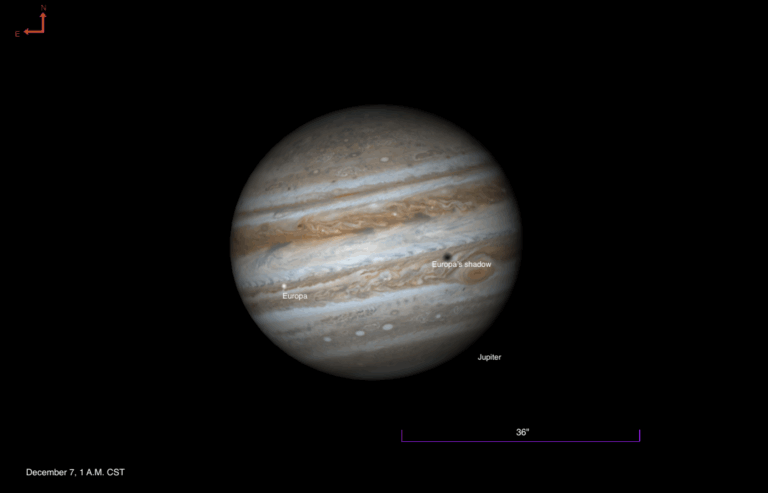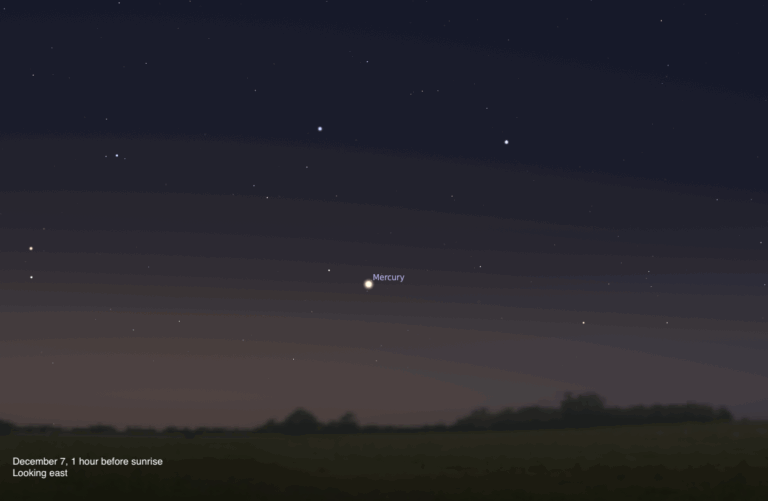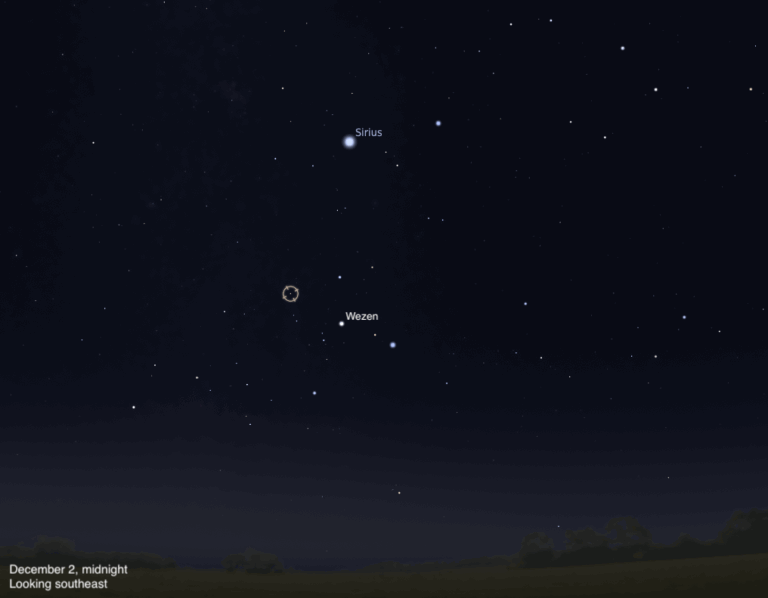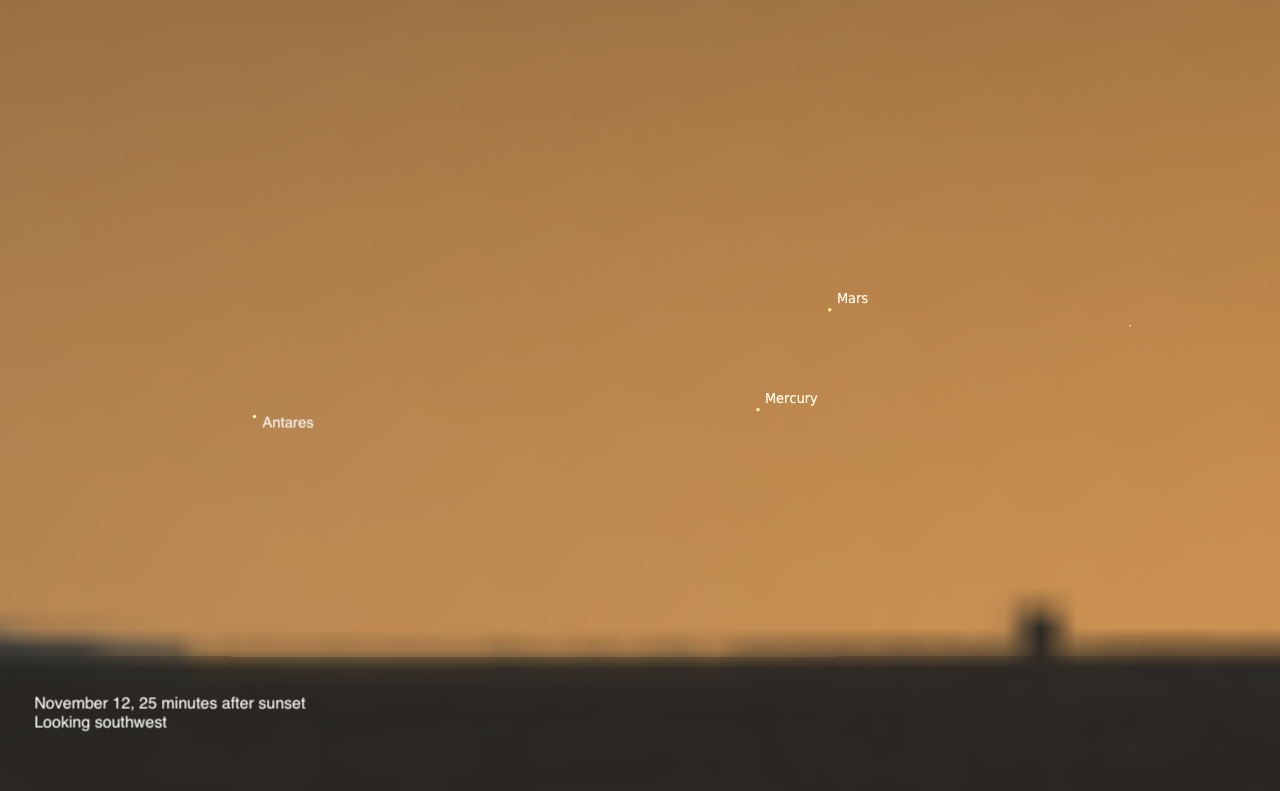
Key Takeaways:
- On November 11-12, observers can witness sequential transits of Jupiter's moons Io and Europa, alongside their respective shadows, across the gas giant's disk, with specific timings detailed for the Eastern time zone.
- During the afternoon of November 11, Mars will achieve a close angular separation of 1.3° north of Mercury, observable in the twilight conditions shortly after sunset using binoculars, with Antares serving as a navigational aid.
- In the early morning of November 12, the 38-40 percent illuminated waning crescent Moon will be situated between Regulus and Denebola within the constellation Leo, presenting detailed telescopic views of craters Copernicus and Kepler near its western terminator.
- Certain geographical regions, including northern Canada and Alaska, are presented with the opportunity to observe a lunar occultation of the 4th-magnitude star Rho (ρ) Leonis.
Looking for a sky event this week? Check out our full Sky This Week column.
November 11: Jupiter’s turn to stand still
Io and its shadow are crossing in front Jupiter’s disk this morning, with Europa following later. Io’s shadow appears at the eastern limb just after midnight in the Eastern time zone — around 12:10 A.M. EST on the 12th; note this is still late on the 11th farther west. Io itself is visible just off the eastern limb and begins its own transit a little over an hour later, around 1:20 A.M. EST (now the 12th for the eastern half of the U.S.). The shadow is gone an hour later, as Io reaches about halfway across the disk.
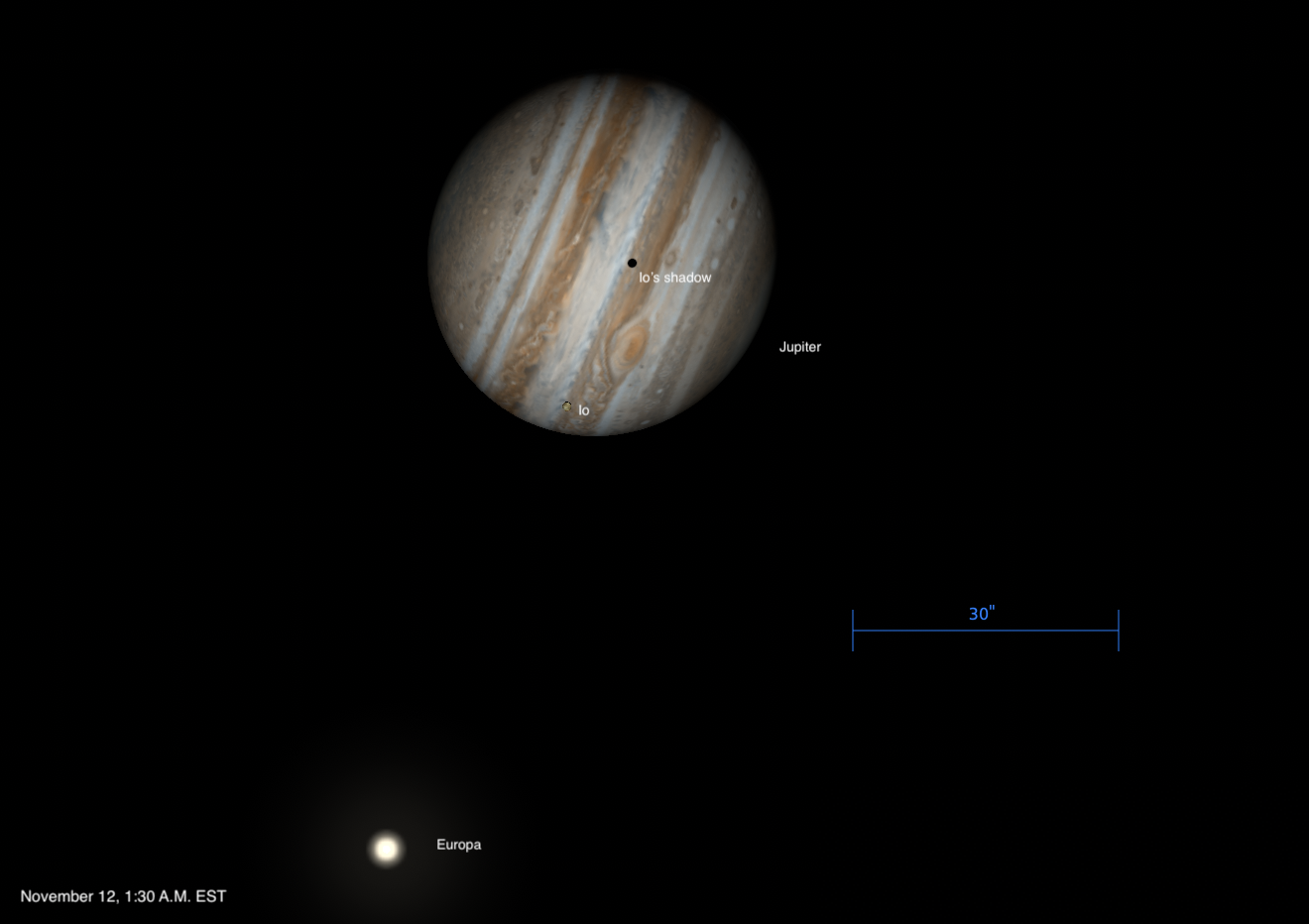
Europa is approaching from the east as well. Its shadow appears around 2:45 A.M. EST (now early on the 12th for all except the Pacific time zone), as Io is closing in on the western limb. Io leaves around 3:35 A.M. EST and Europa’s transit finally begins shortly after 5 A.M. EST, as its own shadow is preparing to slip off the western limb.
Mars passes 1.3° due north of Mercury at 2 P.M. EST this afternoon. You can catch them in the evening sky, but only for a brief window of time after sunset. You’ll also need binoculars, as the sky will still be bright with twilight — though make sure not to use any optics until the Sun is fully below the horizon from your location, which will differ in time by location.
Mars shines at magnitude 1.4 and Mercury is now magnitude 0.8. Magnitude 1.1 Antares is now located 5° to the left of Mercury, and you can use this star as a starting point. Start looking for Antares low in the southwest about 25 minutes after sunset. It will only be 3° high. If you can center it in your binoculars, sweep to the right to land on Mercury, then slowly move 1.3° in the direction of one o’clock from Mercury’s position. That should land you on Mars. You’ll only have about 10 minutes to locate it, given how quickly the region is setting into the hazy air near the still-bright horizon. Use the chart above, and good luck!
Sunrise: 6:42 A.M.
Sunset: 4:46 P.M.
Moonrise: —
Moonset: 1:20 P.M.
Moon Phase: Waning crescent (40%)
*Times for sunrise, sunset, moonrise, and moonset are given in local time from 40° N 90° W. The Moon’s illumination is given at 10 P.M. local time from the same location.
The Moon will rise to the lower left (east) of Regulus in Leo shortly after midnight. By 5 A.M. local time, they’ve reached 50° high in the southeast. The Moon appears sandwiched between the Lion’s two brightest stars: Regulus, the Lion’s heart; and Denebola, the Lion’s tail.
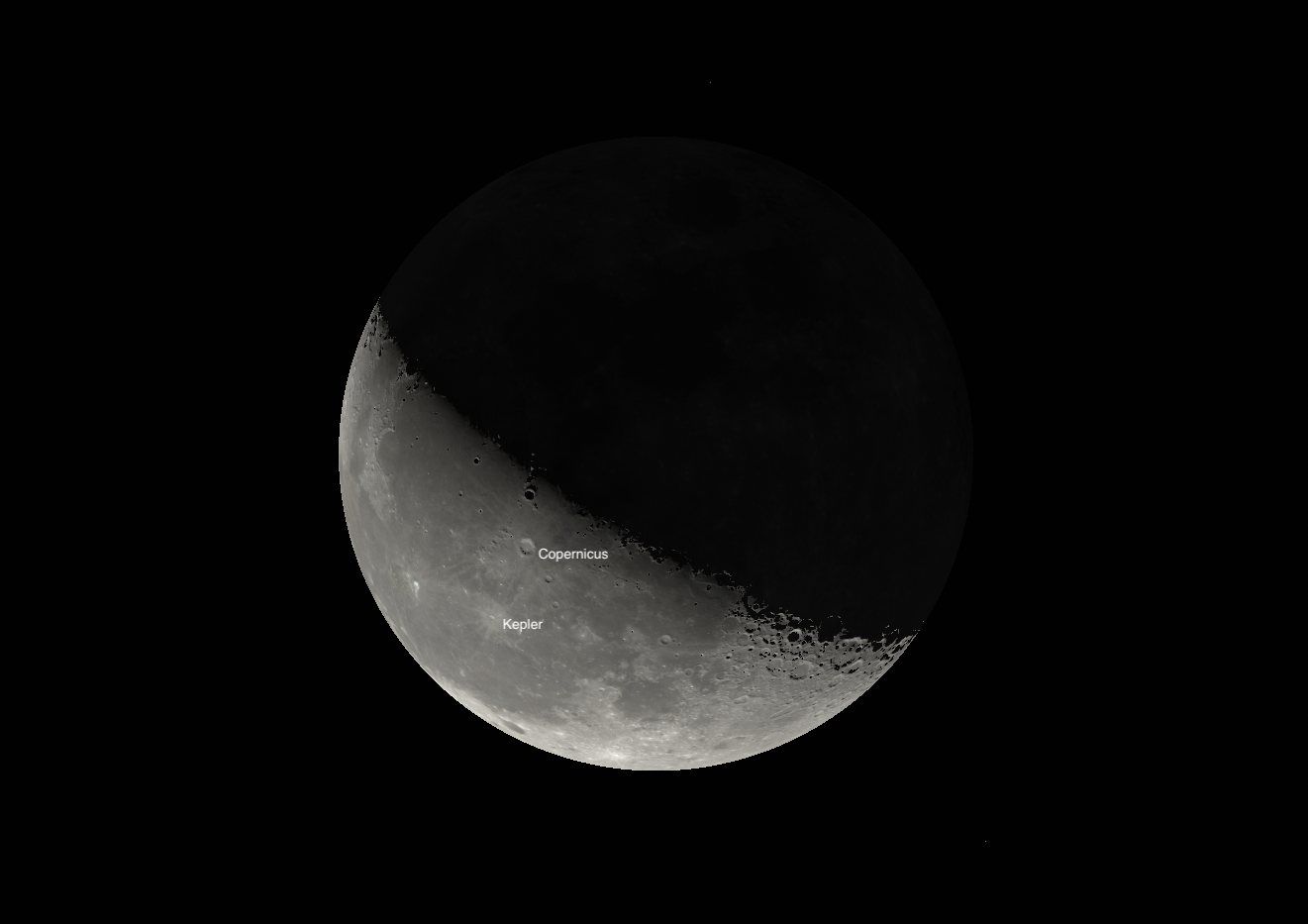
Now a 38-percent-lit crescent, the Moon shows off its western limb, while sunset has darkened the rest of the lunar nearside. Visible just beyond the edge of the terminator dividing night and day is the round, well-defined crater Copernicus in the lunar northwest. Some 56 miles (90 kilometers) across, Copernicus’ eastern rim should appear brighter than its western side as the Sun sets over the landscape, illuminating it from the west. The normally easy-to-identify bright rays of ejecta that surround the crater are now muted, but still visible as you scan the area with a telescope.
To Copernicus’ southeast is much smaller Kepler, only about 20 miles (32 km) wide. Its rays should be slightly more visible, overlapping with those of Copernicus in the region between the two craters.
Some locations in northern Canada and Alaska will see the Moon occult 4th-magnitude Rho (ρ) Leonis — check out the International Occultation Timing Association’s webpage for the event for details if you are in these areas.

